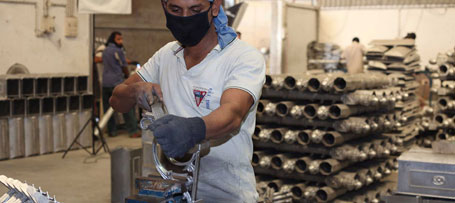
The manufacturing sector has continuously evolved over the years with advances in technology, environmental concerns, and demand factors. Aluminum is amongst the materials that are transforming the dynamics of the industry owing to its lightness, strength, corrosion resistance, and flexibility. As these innovations enter the aluminum product and process domains, they open new territory for industries such as aerospace, automotive, consumer electronics, and building construction. These advanced developments are introducing efficiency, sustainability, and innovation into products that cater to the complexities of the modern world.
The Rise of Advanced Aluminum Alloys
One of the important innovations in aluminum product design and development is the advent of advanced aluminum alloys. In former times, aluminum alloys provided medium strength and resistance to corrosion, but with recent developments, aluminum materials with better properties have come into the limelight.
These new alloys are particularly valuable in aerospace and automotive industries, where reducing weight without compromising strength directly translates into fuel efficiency and performance improvements. Additionally, innovations in alloy formulation are enabling better weldability, formability, and recyclability, aligning with sustainability goals.
Additive Manufacturing: A New Era of Aluminum Fabrication
Additive manufacturing (AM), commonly known as 3D printing, has revolutionized Aluminum product design and manufacturing. Unlike traditional subtractive methods, AM builds parts layer-by-layer, allowing for unprecedented complexity and customization.
Aluminum processes like Selective Laser Melting (SLM) and Electron Beam Melting (EBM) facilitate the production of intricate geometries that conventional processes cannot achieve. It reduces waste, cuts lead times, and offers rapid prototyping. Thus, engineers begin iterations in design, pairing various configurations until the truly workable solution is achieved.
In addition, it enables the manufacturing of lightweight lattice structures, integrated cooling channels, and many lightweight structures with complex internal channels and macro internal arrangements. Such designs appear in aerospace, medical implants, and high-performance sports equipment. As it matures, it might become a more flexible, efficient, and sustainable aluminum product design technology.
Precision Casting and Modular Manufacturing
Manufacturing aluminum products has also been transformed by casting innovations. More refined precision casting processes like die casting, investment casting, and sand casting are utilized for high-precision, complex components with little to no finishing.
Meanwhile, modular manufacturing processes, in which standard aluminum components are mass-produced and assembled into custom configurations, are becoming common. This reduces production costs and speeds up delivery time, providing much-needed flexibility in design. For example, in automobile manufacturing, modular aluminum parts are adapted easily to accommodate varying vehicle models, thus accelerating development cycles.
Sustainable and Eco-Friendly Manufacturing
Environmental concerns influence innovation in aluminum product design and manufacturing. Aluminum is inherently recyclable, and recent advances focus on making the entire manufacturing process more sustainable.
Innovations include the use of recycled aluminum alloys, energy-efficient melting processes, and environmentally friendly surface treatments. More companies are adopting circular economy principles and designing products for disassembly and recyclability right from the start.
Moreover, new coatings and finishing techniques minimize the use of hazardous chemicals, which further lessen environmental impacts. These sustainable practices not only meet regulatory standards but also appeal to eco-conscious consumers and clients.
Digital Design and Simulation Technologies
Aluminum product designing is witnessing revolutionary changes with the integration of digital tools such as Computer-Aided Design (CAD), Finite Element Analysis (FEA), and Computational Fluid Dynamics (CFD). The tools make it possible to simulate real-world conditions, optimize geometry, predict performance, and then manufacture accordingly.
This virtual prototyping reduces the need for physical prototypes, saving time and costs. It also allows for innovative design explorations, such as lightweight structures with optimized material distribution, enhancing overall product performance.
In addition, digital twins, which are virtual representations of physical products, aid in continuous monitoring and performance optimization throughout the product life cycle to guarantee that aluminum components perform reliably under strenuous conditions.
Industry 4.0 and Smart Manufacturing
The adoption of Industry 4.0 principles—such as IoT, automation, and data analytics—is revolutionizing aluminum manufacturing processes. Process optimization, predictive maintenance, and real-time monitoring are made possible by smart factories with sensors and networked equipment.
With this technological integration, manufacturing cycles are accelerated, waste is decreased, and accuracy is increased. Additionally, it makes customisation at scale possible, enabling producers to effectively create tiny quantities or highly customized aluminum components.
As industries continue to seek innovative solutions that balance performance, cost, and sustainability, staying ahead of these innovations is crucial. Partnering with forward-thinking manufacturers and embracing new technologies will ensure your products remain competitive in a rapidly evolving marketplace.
